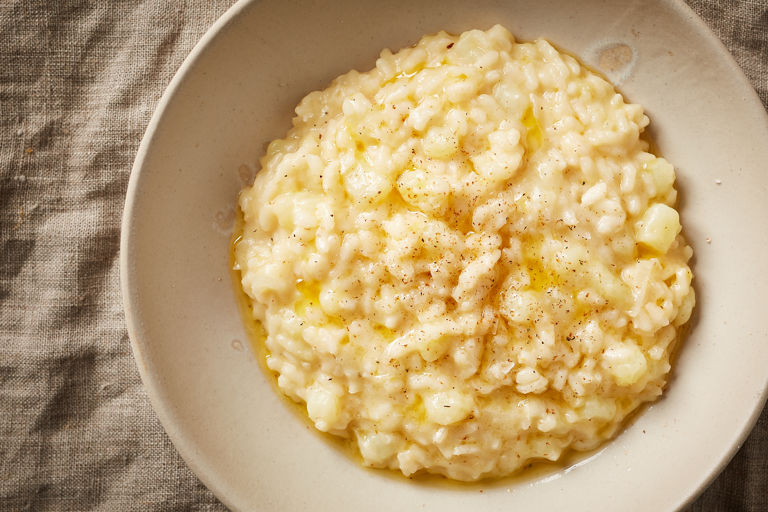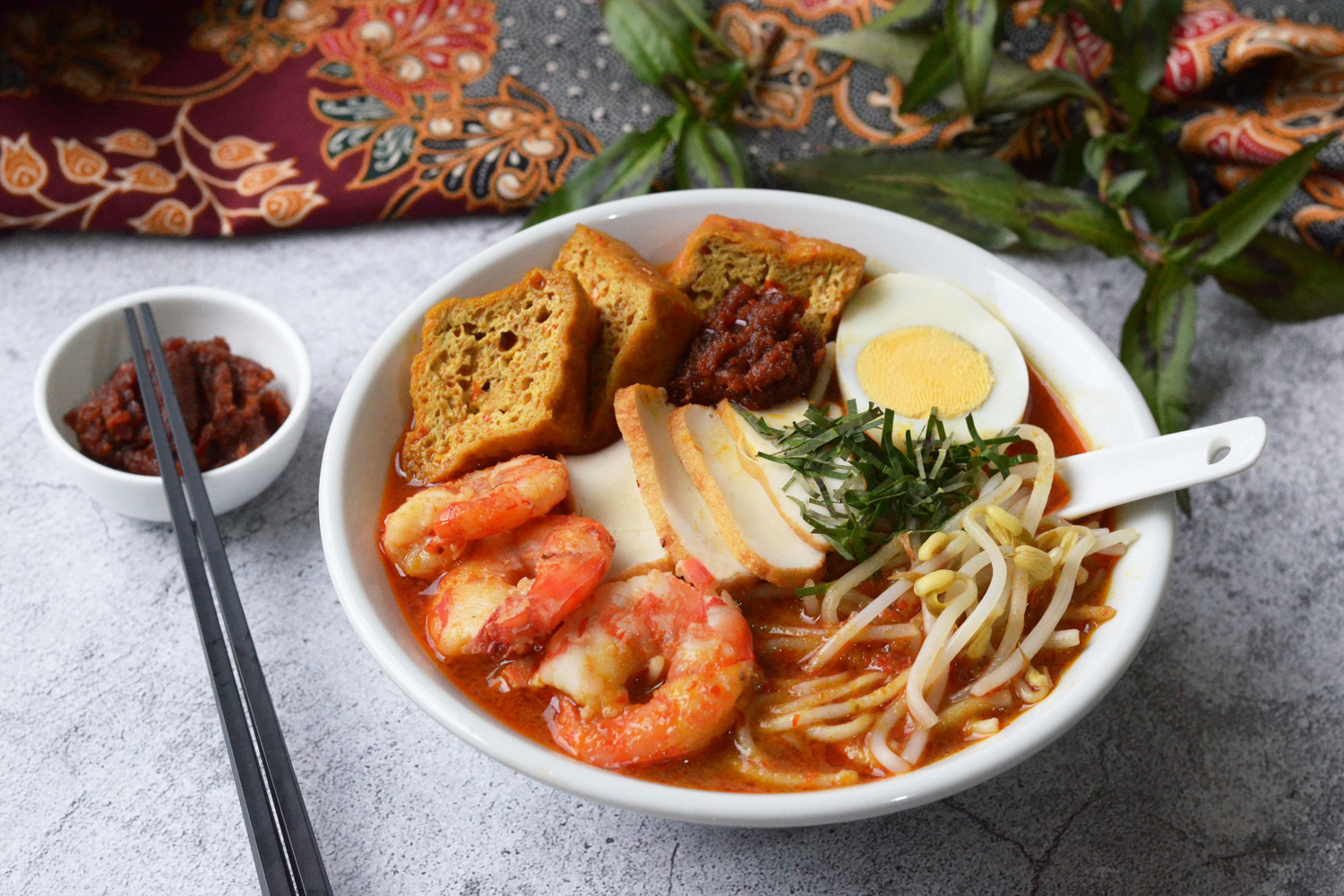pokomde.info – Risotto is more than just a dish—it’s a culinary experience. Known for its creamy texture and rich flavor, risotto has become a beloved staple in Italian cuisine, offering endless possibilities for variations. Whether you’re enjoying a classic Risotto alla Milanese or experimenting with seasonal vegetables and seafood, risotto has a way of making any meal feel luxurious. Let’s explore the history, technique, and ingredients that make risotto so special.
A Brief History of Risotto
Risotto has deep roots in northern Italy, particularly in the regions of Piedmont, Lombardy, and Veneto. The name “risotto” comes from the Italian word riso, meaning rice. It is said to have evolved from the ancient practice of cooking rice in a broth, much like a modern-day pilaf. The dish as we know it today began to take shape in the 18th century, though it wasn’t until the 19th century that risotto became firmly established as a symbol of Italian gastronomy.
Risotto is particularly associated with Milan, where Risotto alla Milanese—a saffron-infused version of the dish—has become an iconic representation of the region’s rich culinary tradition. Over time, risotto spread throughout Italy, with each region adding its own unique twist based on local ingredients.
Key Ingredients: The Foundation of Risotto
While the method of making risotto is consistent, the ingredients can vary greatly depending on the dish. However, there are a few essential components that make a risotto what it is:
1. Rice: The Heart of Risotto
The choice of rice is crucial. Risotto requires a high-starch, short-grain rice that absorbs liquid slowly and releases starch during cooking, which gives the dish its signature creamy consistency. The most commonly used varieties are:
- Arborio: The most popular type, with a plump, oval grain. It produces a creamy, rich texture.
- Carnaroli: Known as the “king of rice,” it’s slightly firmer than Arborio and holds up well to longer cooking times.
- Vialone Nano: A lesser-known variety from Veneto, it’s prized for its ability to absorb liquid without losing its shape.
2. Broth: The Flavorful Base
Broth—whether vegetable, chicken, or beef—is used to cook the rice. It’s essential that the broth is warm when added to the rice to ensure even cooking. The broth provides depth of flavor and complements the other ingredients in the dish. Homemade broth is always preferred, but store-bought varieties can work in a pinch.
3. Fat: Butter, Oil, or Both?
Fat is used to sauté the rice at the beginning of the process, and it also contributes to the dish’s rich, smooth texture. Most risotto recipes use either butter, olive oil, or a combination of both. The fat helps coat the rice grains, which allows them to slowly absorb the broth, and enhances the final creaminess.
4. Onions or Shallots: For a Sweet, Savory Base
A finely chopped onion or shallot is typically sautéed in butter or oil at the start of the cooking process. These alliums provide a subtle sweetness and a savory foundation for the risotto.
5. Parmesan: For the Ultimate Creaminess
Once the risotto has reached its desired creamy consistency, it’s common to finish the dish with a generous amount of freshly grated Parmesan cheese (Parmigiano-Reggiano). This adds richness and depth, tying all the flavors together. For some variations, other cheeses like Pecorino Romano or Gorgonzola are used for a sharper or more pungent flavor.
6. Wine: The Perfect Pairing
A splash of dry white wine is often added to the risotto after the rice has been sautéed, before adding the broth. The wine provides acidity, balancing the richness of the dish. It also adds a depth of flavor that enhances the overall taste.
The Risotto Technique: Slow and Steady Wins the Race
While risotto is often thought of as a quick and easy dish, it requires patience and attention to detail. The technique involves slowly adding the broth in small increments while stirring constantly. This constant stirring helps release the starch from the rice, which is what gives risotto its signature creamy texture. Here’s a simplified step-by-step guide to making risotto:
1. Sauté Aromatics
Start by sautéing finely chopped onions or shallots in butter or oil over medium heat until softened and translucent.
2. Toast the Rice
Add the rice to the pot and stir it in the fat, allowing it to toast for a couple of minutes. This step ensures that the rice absorbs the fat and prevents it from becoming mushy.
3. Deglaze with Wine
Add a splash of white wine and stir until the alcohol evaporates, leaving behind a tangy depth of flavor.
4. Add the Broth Gradually
Begin adding the warm broth one ladle at a time, stirring frequently. Allow the rice to absorb the liquid before adding more. This gradual process takes around 18-20 minutes, and patience is key. Stirring constantly helps release the rice’s natural starch, creating the creamy texture.
5. Finish the Dish
Once the rice is al dente and has absorbed most of the liquid, remove the pot from the heat. Stir in butter and Parmesan cheese until the risotto reaches a velvety consistency. Season with salt, pepper, and fresh herbs like parsley or basil to taste.
6. Serve Immediately
Risotto is best enjoyed fresh, served immediately while it’s still creamy and warm.
Variations on Risotto: Endless Possibilities
One of the reasons risotto is so beloved is its versatility. You can tailor the dish to suit any season, occasion, or preference. Here are some popular variations:
- Risotto alla Milanese: A classic from Milan, flavored with saffron, which gives the dish a vibrant yellow hue and a delicate, floral aroma.
- Mushroom Risotto: Wild mushrooms, such as porcini, are a popular addition, lending an earthy depth to the dish.
- Seafood Risotto: Shrimp, scallops, or even lobster can elevate the dish, often paired with a touch of lemon zest or white wine.
- Vegetable Risotto: Seasonal vegetables like asparagus, peas, or butternut squash make for light, colorful variations.
- Lemon or Truffle Risotto: A bright lemon zest or a drizzle of truffle oil can bring an extra layer of sophistication to the dish.
Risotto Around the World
Though risotto originated in Italy, it has been embraced by chefs and home cooks around the world. In countries like the United States, risotto has found its place on upscale restaurant menus, often with inventive, fusion-style variations. From risotto with duck confit in France to coconut milk risotto in Southeast Asia, the technique and basic flavors of risotto have become a canvas for chefs worldwide to showcase their creativity.
Conclusion: The Soul of Italian Cooking
Risotto is the embodiment of Italian culinary philosophy: simplicity, quality ingredients, and a little patience. Whether you’re making a traditional dish or putting your own spin on it, risotto offers endless possibilities for both novice cooks and experienced chefs. It’s a dish that encourages creativity, warmth, and the joy of sharing good food with loved ones. So, the next time you’re in the mood for something rich, comforting, and indulgent, take your time, follow the steps, and treat yourself to a perfect bowl of risotto.








